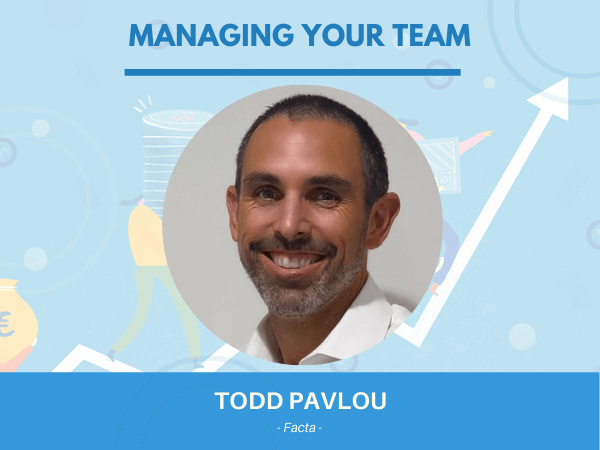
How to Make Sure That You Have Sustainable Growth
I’ve got Todd here from Facta and he’s going to tell us how you can make sure that growth is sustainable and that the dynamics of your team stay as good as day one. So Todd, how do you make sure that introducing new blood doesn’t destroy the old wood?
Todd: Team dynamics are so flexible and ever-changing. Even teams that have been together for years and years, the dynamics will shift because people evolve and things happen to individuals both at work and away from work that have an impact. So team dynamics is something that is a constant no matter what. But when you bring new people into your team, it automatically changes the dynamics because you’ve got another cog in the wheel. With the budget changes and the government trying to stimulate employment, there are incentives there for people to be able to be employed. But there are also some unintended consequences to that where business owners need to be aware that as they bring new people in that they’re introduced to the team in the right way so that the dynamics of the team don’t become unsettled. Hopefully, those new people actually add to the team from a cultural perspective.
Does Business Size Matter?
Let’s say one of our community members has got a cracking team of 10, or a cracking team of 20, or a cracking team of 100. It doesn’t really matter what the number is, but they are in a state of comfort. Everyone seems to be working enough, their churn rates are pretty low in regards to their staff turnover, and everything seems to be cruising along. Now, let’s say you introduce 20% more staff on those numbers. Does the size of your business really matter a whole bunch as to how much it’s going to change and shape up the way that the business growth has occurred?

So always keeping in mind that an individual is a person who brings their own strengths, weaknesses, areas for improvement, and abilities are key. When you bring a new person into the
team, they’re automatically going to adjust the feel of the team. There’s going to be some people that are going to embrace those individuals and some that will be more standoffish. It’s about bringing a new person in, and actually really focusing and spending the time to induct them and make them part of the team.
What happens in so many businesses is that an individual comes in on day one, and they haven’t got their passwords, because the company doesn’t have a reliable I.T partner. They don’t have their systems and processes in place. This means that automatically on day one, they’re off on the wrong foot. So it’s fundamental to long term success is making sure that you bring the right people in and induct them.
IT doesn’t have to be expensive. If you’re starting a business and need reliable IT support and services, fill out the form to learn more about $1 IT services.
Profiling Your Team
It comes down to documentation and your processes. As you said, getting off on the right foot shows that you’ve got these things in place and there is a structure to your business. One of the things you want to make sure that you are doing is profiling. It only takes a few questions, and we’ve incorporated that into our onboarding process. Before someone joins the team, we know what type of person they are in a fun way. Using a profiling tool, such as Myers Briggs or DISC to understand if they will get along well with other team members is a little fun test. So would you say it’s a sensible idea to start profiling straight at the start?
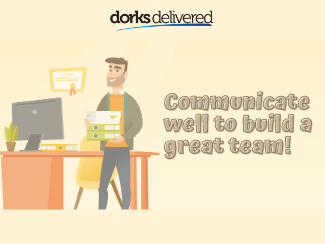
Too many of us rightly are comfortable with who we are, and we communicate in the way that we feel comfortable with. That’s natural, right, our brains don’t have to work too hard. But unfortunately, if we’re very different people, we need different things to have effective communication. So often communication will break down because of the why. I’ve got an example right now with a customer that I’m doing some work with. They have two individuals in the workplace that are constantly in conflict with each other. It’s got to a point now where it’s unworkable, and we basically need a mediator to be able to keep these guys in the workplace. My view of the investigation is that most of this comes down to a lack of communication. It comes down to them seeing exactly the same situation, but in different ways because of the type of people they are and the way that they see the world.
Now, if on day one they were given a little bit of insight into how the other person thought and acted, perhaps they’d have some more empathy and be able to actually engage more effectively.
They’re all just tools to help us understand people further and it’s about having the ability to relate to someone else. In a work environment, you have to spend eight hours a day with that person, sometimes longer than you’re spending with your partner. It’s really important to be able to get along with people. You can also apply these tools to a business that’s well established and still gain massive advantages.
If you need assistance with your automation, talk to a dork. Fill out the form below to book a free one-hour consultation.
How it Can Work
Todd: I’ll tell you about an organisation that we did just that. They’re an organisation with about 70 or 80 people spread across Australia. There are four locations with staff ranging from a blue-collar workshop guy all the way through to your accounts payable CFO. It was fair to say that there were some cultural disconnects, and they were communication breakdowns. I went in and did a full diagnostic. The things that came out of that was that there wasn’t a clear process, and the training was insufficient for people to be able to do their job. But the thing that tied it all together was a lack of communication and breakdowns in communication. If people did a deep dive into their business, they’d see that process, training and communication is the root cause of the kind of issues that they might be facing.
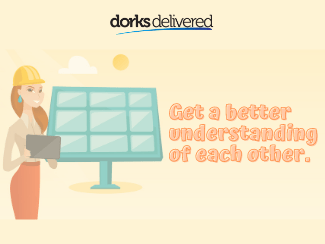
It’s based on four behavioural types:
Dominance
Influence
Steadiness
Conscientious
They are all based on two different matrix lines. One is about how direct or indirect a person is for their communication, and the other one is about how open or guarded they are with their communication. So I like to use the ideas of whether they’re either an open or a closed book, or they’ll communicate with you like a hammer or communicate with you like a wet newspaper.
Once you can actually start to listen to how a person talks and how they behave. So we went through that whole process using this tool with this business of approximately 70 people. What we found is that when you put all the profiles onto what they call a wheel, you can see where everybody sits on that wheel. You can start to identify just by looking at this wheel where the elements of conflict can come in. So somebody who’s very task-focused, very fast-paced.
sometimes can rub people the wrong way, because they’re very brash. Once we started to plot all these individuals and started to join the dots on where the conflict points were coming from, we’re actually able to share a data point rather than an opinion about where it might be the root causes of those conflicts can occur.
Knowledge is power, and once people understand themselves a little bit more, and then also understand how their behavioural style can interact with another, you can start to build that empathy, build that understanding and start to improve communication. That changed that organisation’s mindset. It is really important to understand that it’s not about putting somebody in a box. So for example, I’m a very high DI, so somebody who’s very task-focused, fast-paced, and people-focused to a certain degree. But that doesn’t mean I can’t focus on the details, it just means it’s harder and it’s less natural for me to do so. When you are profiling from the start it allows you as a leader to understand where that individual strengths are, where they’re going to get their energy from and try to avoid putting them into roles or asking them to do tasks that they’re just not made for. But if you ask them to do that for an extended period of time, they’re going to lose energy, they’re going to get tired, and you normally find that they’re putting their hand up for more breaks and more holidays and more time away from work.
IT doesn’t have to be expensive. If you’re starting a business and need reliable IT support and services, fill out the form to learn more about $1 IT services.
Finding Common Ground
It is the square peg in a round hole type situation. Do you find that before your profiling that there is a natural grouping within the profile? People who have just resonated and naturally pulled themselves together, you might see it during the lunch break where those people are hanging out together without being grouped into a box.
Todd: If you looked at it that way, it’s the 80/20 rule, right? Birds of a feather kind of flock together. If you’re going to spend your social time or your lunchroom time together, you don’t want tension, you don’t want friction. That normally will be subsided if you’re with people that have like-minded interests and personality types, but there’s always the exception, right? This is the thing about not putting people in boxes if you’ve got commonality, and if you find common ground, you can engage with anybody. So really being mindful of who you are as an individual, your strengths, your areas for improvement, but then really focus on okay, how do I need to adapt with those around me to get the best communication.
How Good Can the Results Be?
I think what a lot of people are thinking is how does this affect the bottom line, and more importantly, the efficiency of the business. I can only imagine people are taking fewer days off if morale is high in the workplace. People are feeling more comfortable in the work that they’re doing and feel that they can communicate with more people in their team without having to feel out if there is friction or indifference between them. What have you seen as a generalisation after a team has been optimised?
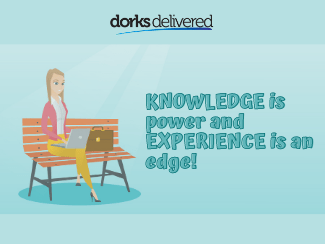
I was working with a customer where we had a manager, let’s call him Bill. We had one of his team members, let’s call him Phil. Bill and Phil worked in a cubicle setup and were next to each other. For two years, the manager would come in, and he physically put his head on his desk. For two minutes he would hope and pray that Bill would resign that day. Imagine that environment, you’ll come in for two years, hoping that the guy next to you pulls the pin so you no longer have to engage with him. When you pull it all apart, it was a lack of understanding of where the other person was coming from. One was a very high conscientious type who was very good at using the database and was very focused on processes. On the other side of the wheel, Phil was not the system guy, he was anti-system. But he was hugely focused on the customer, building relationships, and building those bonds and delivering for his customer.
You put them together, and they are probably the perfect individual for the business. But what they both valued and what they’re behavioural types gravitated to was completely different. The conflict caused massive disruption in so many ways, including with customers leaving. So you can measure this scenario in how many customers left because of this conflict. The amount of sick leave that was taken from both individuals was well exceeded and into the red. So based on average salaries, this was costing thousands and thousands of dollars. It was having a massive impact on those around them and their teammates. Can you imagine coming into work knowing that this tension and friction is there in front of you every day? Not too many people can just put that to the side. That was having an impact on their productivity. There are some hard costs there that you can measure, but there are also so many soft costs. These include what was happening to people’s psyche, what was happening to their mental wellness, and just their overall health.
Do you need help with backup and recovery? Fill out the form to get in touch with a Dork.
Put Complete Trust In Your Team
What you said around having a business, people love it your team is pulling together. With the COVID stuff that’s happened, I can comfortably say we had a bit of a decline. I spoke to the 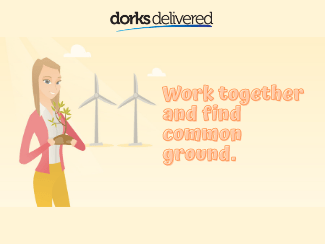
We’re working together as a team of unicorns and anyone can have that team, you just need to be able to understand how people work within the team. We have a hard discussion Friday, where once a month we go through and talk about what was something that someone did that you hated, or something that someone did that you really liked. It’s good to be able to work out who they are and how to work together to be able to make sure that you are addressing the elephant in the room in the best way possible.
Todd: Question for you. Why do you think you’ve been able to lead your team to the point where they’re prepared to sacrifice as they have?
We all believe in the vision is what I’d like to say. Why are we in business? Why do we do what we do? Why do businesses gravitate to us instead of another I.T company? What makes us different to anyone else? We sit down and we talk about that. Another thing we do discuss quite a lot is, what do you hate to do in your role?
Your Best Employees Don’t Need to Be Your Managers
We make sure that if you’ve got a fantastic engineer, that doesn’t mean that now you put them in a position of being a manager. Instead, you can pay them more than the manager, and 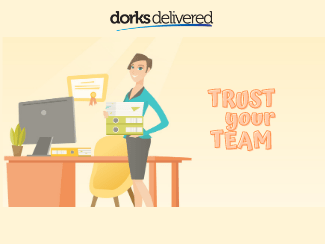
Another thing to consider is how do people work with rewards? We have very financially focused people, while other people are very happy to see different words of appreciation and accolades that they’re getting. So it’s about understanding what that carrot is for them and working with them. My first contractor was 10 and a half years ago, and I was lucky that we work together so well. After that, I’ve gone through my bout of understanding how to find the right people. That’s changed around our interviewing process. It’s unique enough that News.com.au found out about it and interviewed me on my interviewing process.
It comes down to understanding the person before you put them into a role that you don’t want to have them in, and then understanding what drives them. What’s their success? Is it spending time with the kids on the weekend? Or is it spending time on a surfboard? Or is it building stuff? One of the big things is just having someone give you a truthful answer. Don’t hire a guy who says, I just love working, you’re going to get into trouble.
IT doesn’t have to be expensive. If you’re starting a business and need reliable IT support and services, fill out the form to learn more about $1 IT services.
What To Do As a Leader
Todd: There’s no cookie-cutter approach, everybody’s an individual. You’re looking to understand what motivates them, and then what environment you can provide so they can be their best. I’m a big believer that I can’t motivate you, you can’t motivate me, but what we can do in a leadership role is be able to provide the best environment for that individual to be able to find their own motivation and be able to reach their own goals. Unfortunately, it isn’t common in a lot of organisations to have critical conversations, so many leaders shy away from that. I believe if they’re better armed with an understanding of how is this person likely to react, how’s the best way to be able to communicate with them, how’s the best way for me to be able to get my message across with this individual, you go into those conversations with a whole lot more confidence, and nine times out of 10, you’ll be able to get a better outcome.
We had one of our customers using our system to be able to plan a difficult conversation with a forthright and aggressive employee. By having the insights into what to say and what not to say and how to say it, they were able to get a positive outcome. In the past, they had conflict and negativity and hadn’t been able to achieve that goal.
Use Their Motivations
That’s what you want to have, you want to have a family of people that you can have outside of your family that you can communicate with and work with. Some of the things that drive and motivate people are using their own ideas. One of our employees, he said, I would just love to be able to use some software that we’re using to build integrations. He’s part of the open-source community and said he really likes giving back, so I said go for it. I told him, feel free to spend 15, 20% of your time being paid to make this stuff which he was very happy about. It’s just about finding what that carrot is for the person and how they communicate what’s important to them.
How Todd Can Help You
If you don’t have these systems in place, you should definitely be jumping across to Facta and see if you can get ahold of Todd so you can have your business refocused. What would you say are some of the things they could expect to get out of having a quick conversation with you?
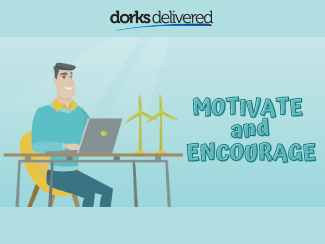
Anyone out there, jump across, check it out, and you can’t go wrong. What do you have to lose? It’s just all the benefits. One last question before we head off. If anyone out there wants to be reading a book on something that could help out their process, what would be your favourite book around this?
Todd: Now I won’t give you the DISC manual, because that’s pretty dry. The one that I’d suggest that I keep coming back to is a book called The Culture Code. It’s a book as the name suggests all about culture. It profiles organisations from high profile sporting ones down to some that you never would have heard from, and some of the commonalities that those organisations have. It shows you how they build a really robust, strong, independent culture that stands the test of time, and a lot of focus on how leaders create that culture.
Anything else you’d like to leave us with before you head off?
Todd: The final message is just about acknowledging that we’re different. Understand those differences. Then the hardest part is to act differently. You will see the benefits.
[module-379]




























